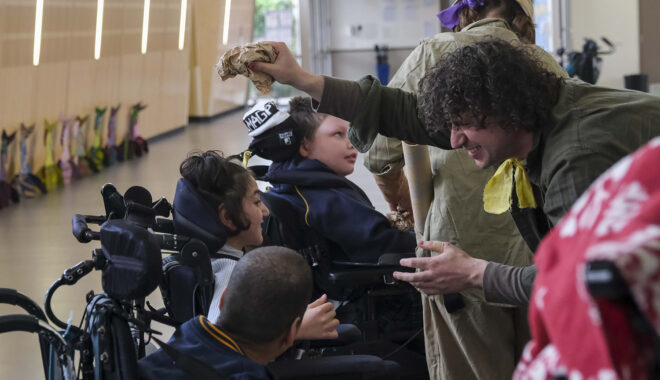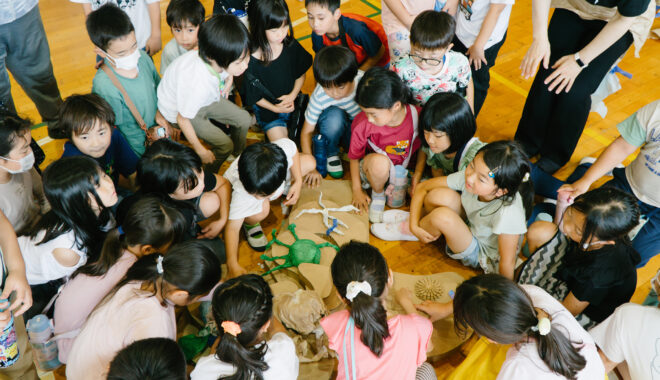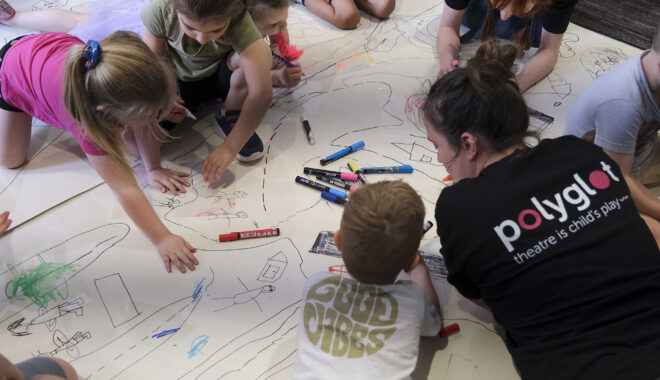1 Feb 2019 Education News
The arts in schools – an extended game of cat and mouse
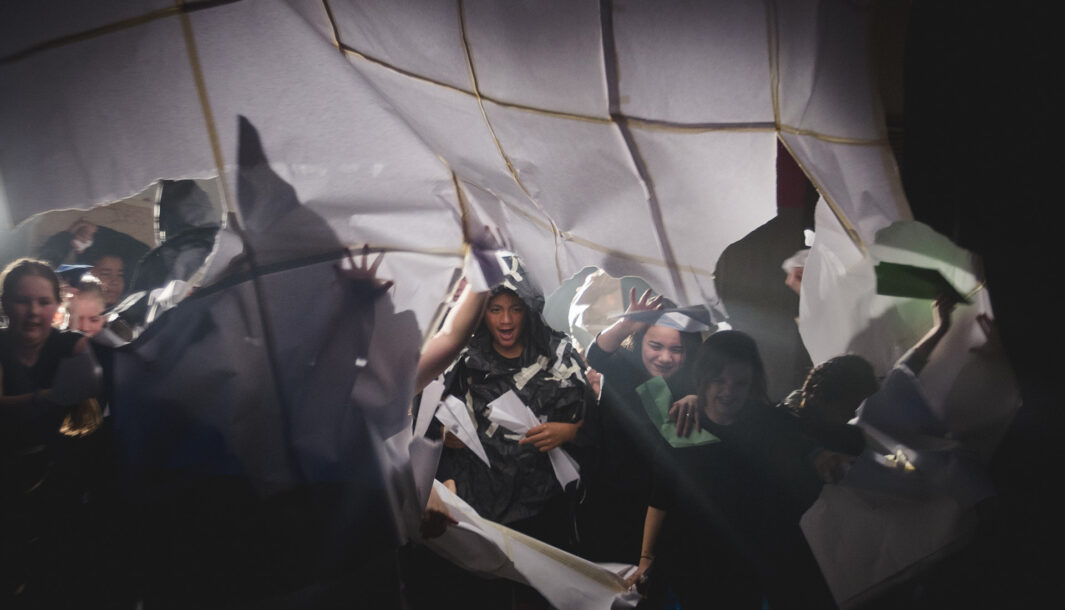
By Dr Christine Sinclair
In a small primary school in outer suburban Melbourne, it’s the restless hour before lunch and the Year 5/6s are in the hall. They’re playing cat and mouse and playing it with gusto. The teacher is playing too, and there are several other adults in the game as well. It’s fun. And it goes on for a long time. (I’m on the sidelines, watching, wondering, and writing notes in my beaten up notebook.)
To the outside eye, this might look like a rowdy group of 11 and 12 year olds letting off some steam and getting out of doing work; the teacher taking an easy option of playing games instead of insisting that her students apply themselves, and do some ‘work’ before lunch. But cat and mouse isn’t always just a game, and games aren’t always just for letting off steam, or having ‘fun’. Polyglot is here and stealthily, art is being made.
Step back just a little from the scene in the school hall and I’ll tell you what I saw on that particular day, and on the many other days when Polyglot was in residence at Mahogany Rise Primary School last year. It was 2017 and I was lucky enough to get a great gig as a project evaluator – my job was to spend Term 3 (1-2 days a week) observing Polyglot artists working with the Year 5 and 6 students and their teacher C as they created an arts project principally driven by student interests and ideas [1]. Each week, I would come into the school and observe the work of the Polyglot artists, Sylvie, Nick and Jason, led by Sue Giles and supported by their production manager, Lexie and W, who was both Polyglot artist and education support officer at the school. On a weekly basis, the artists would spend several hours with the Year 5/6 class. Some of you might be thinking, what a luxury. Or, on the other hand, what a waste of time, there’s so much to get through every week, how could they possibly give over a whole day for a whole term just for an arts project? Some of you might also be wondering, what did the teacher do during this time?
All valid questions…
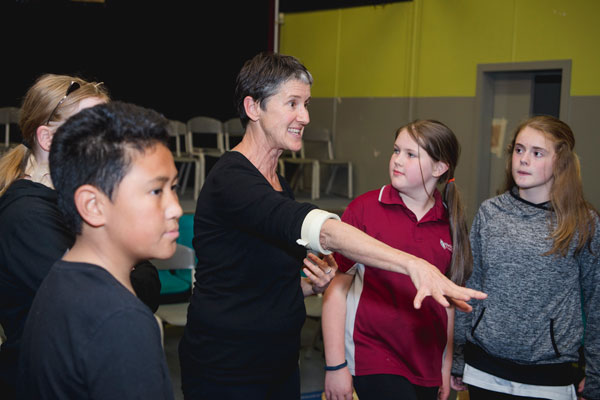
Back to cat and mouse in the school hall. Let me tell you what I discovered when observing the game. For starters, there was a big gender divide in this particular class: girls gravitated to working with other girls and boys with boys, and within these groupings there were further divisions: cool girls, sporty girls and studious girls; sporty boys, creative boys and disengaged, isolated boys. So making an arts project where the whole class could work co-operatively and collaboratively presented some challenges for the artists, and the children. In the lightning paced cat and mouse game, the gender and clique barriers broke down. Students found themselves in unfamiliar pairings – with other students and with the Polyglot artists, who were playing the game with just as much enthusiasm as the children. What message did this send to students and their teacher? Firstly, chasing and being chased in a game can be fun! Secondly, we are your collaborators in this game, not the leaders. In fact, no-one is ‘in charge’ when all agree to play to the same set of rules and respect others.
At the conclusion of this game, this rather disparate group of children had come together – they were co-operating, supporting and taking care of each other, collaborating with adults who they were just getting to know and trust and with whom they could play as equals in this particular space. By setting up this game with minimal instruction, and allowing it to unfold organically, the artists had communicated what it meant to ‘do Polyglot’ – it took place in a safe space; there was joy in sharing and collaboration; children and adults worked and played alongside each other; and it was fun. There was a lot of learning in that hour. In fact, many of the principles of Polyglot’s child-led, collaborative approach to the arts [2] were very much in evidence, including one of the most intriguing – which I chose to call ‘hard fun’.
This is a term I first heard from a Montessori teacher in Canada when she was describing what took place in her Year 3 classroom when they were staging their first Shakespearean play (A Midsummer Night’s Dream). The students at Mahogany Rise LOVED the days when Polyglot were in their classroom – the energy levels rose and the sense of fun permeated all aspects of the time the children spent with the artists. Through the playful, engaging explorations of drawing, making, performing, dancing, musical composition and games, confidence grew and so did a sense of purpose. As the project progressed, like the third graders in Canada doing A Midsummer Night’s Dream [3], the Mahogany Rise children began to replace fun with ‘hard fun’ – this might be trying and failing, and trying again; or practising choreography so that everyone was in sync; or composing a piece of music so that it fitted with the atmosphere a group was trying to create; or, giving up your own idea to accommodate someone else’s, knowing it was the better one for now. Hard fun is hard won and brings many rewards – like the celebratory evening with families and friends and former students, which took place in the very same little school hall.
Through film, performance, live and recorded music and an exhibition, the children shared their weeks of creative exploration and art making. They called their work, Altogether – no longer a collection of separates but an ensemble. It had been quite a journey since that game of cat and mouse, as one of the children acknowledged:
“I really enjoy it because they do fun activities and they teach kids to bond with each other. For instance, the cat and mouse game we played today – making people go to each other and like, bond. Yeah like boys and girls.”
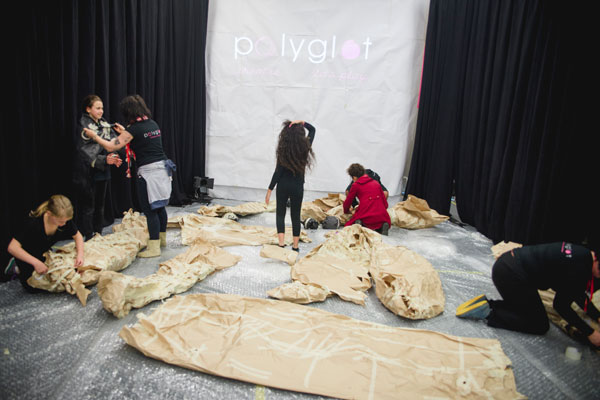
Someone really important took the journey with the 5/6s. It was their teacher, C. For her, working with Polyglot was completely new and something of a wild ride. For many teachers, the openness and unpredictability of a Polyglot project in their classroom can be daunting and confusing. The Polyglot team recognize that this potential collision of cultures – formal schooling and the arts – requires some careful navigation. They take care to consult with the teacher, seek her advice and insight about her particular group of children – especially on how and when to tread carefully – and they invite her in to be part of the process. C embraced the challenge and became a weekly champion for the arts in her classroom. She supported and encouraged the children and stayed remarkably calm when creativity looked a lot like chaos.
There is a risk that when artists partner with children in schools, the teacher becomes marginalized. What is their role? Do they play cat and mouse or stand to the side or help the less confident students to find a way into the game, or, watch the clock, waiting for lunch to begin? In C, Polyglot found an ally in their arts adventure and invited her to find her own way into the project. In Polyglot, C too found an ally – an unexpected one in the learning goals she had for her class [4].
When Term 3 ended, and Polyglot had left the building, C discovered some important residuals from all the hard fun. C has the last word:
“Getting them to realise that nothing’s a wrong decision. Everyone needs to make mistakes. Mistakes can help you create further. And it’s been really nice that the children have been in an atmosphere where they’re not being judged, they’re just being creative and it doesn’t matter how far… out of the box you are, it’s perfect.”
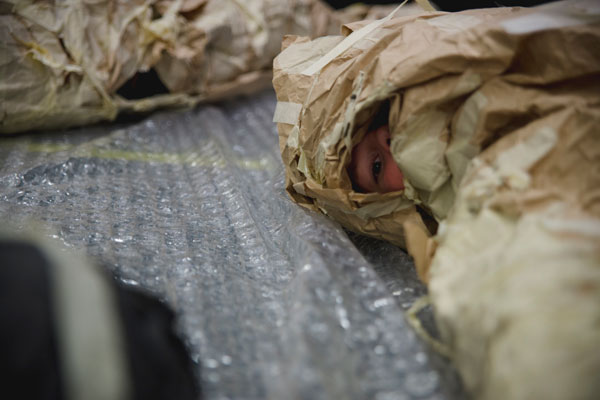
Photography: Theresa Harrison
References and further reading
[1] Sinclair, Christine (2017) Polyglot- Mahogany Rise Evaluation 2017: Altogether; Sinclair, Christine (2017) Mahogany Rise Longitudinal Report: Doing Polyglot
[2] (See Page 39 for an overview of the Polyglot process, project goals and the impact on the children.)
[4] (See Pages 41-44 for a review of the professional arts-education nexus, esp section on the role of teachers.)
[3] Belliveau, Geroge and Sue (2014) Shakespeare with young learners. Really! Why? How?
https://www.academia.edu/9625190/Shakespeare_with_Young_Learners
Ewing, R. (2010) The Arts and Australian Education: Realising Potential. Australian Education Review; no. 58 ACER Press (Australian Council for Educational Research)
http://www.acer.edu.au/documents/AER-58.pdf
Biography
Christine Sinclair is Head of Drama Education at the University of Melbourne. In addition to teaching in undergraduate and postgraduate programs in teacher education, drama and arts education, she is also a freelance community artist and evaluator in the community and applied theatre fields. She has collaborated on many community theatre projects and on research-based performance projects which have been performed in public venues, at conferences and academic forums in Australia and internationally and is co-author (with Anne Harris) of Critical Plays published by Brill/Sense. Christine has been a co-editor and contributing author to Education in the Arts (Oxford University Press) a leading arts text for pre-service teachers and educators in primary schools. Christine was a Chief investigator in TheatreSpace: Accessing the Cultural Conversation, an ARC funded study into young people’s attendance at mainstream theatre.



